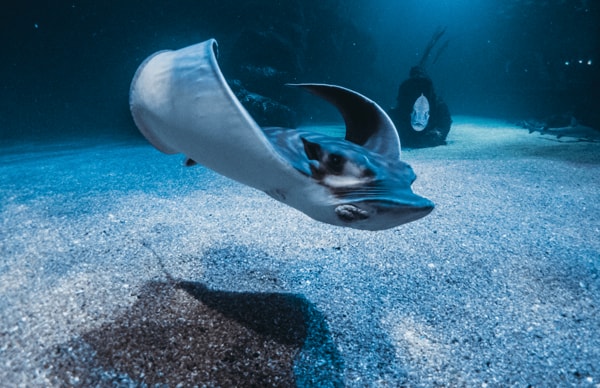
Sabias que...
…that venomous spine at the base of the tail of the Bull Ray can cause painful wounds?
BULL RAY
Order: Rajiformes
Family: Myliobatidae
Distribution: Atlantic coasts of the Iberian Peninsula to South Africa and southern Mozambique, including the Canary Islands and the Mediterranean Sea
Features: They have 7 rows of flat grinding teeth, which they use to feed mainly on crustaceans and molluscs.
Status of species: Data Deficient
The Bull ray (Pteromylaeus bovinus) is a cartilaginous fish that looks like something halfway between a shark and a ray. They have a broad, flat head like rays while the rest of the body is much more similar to sharks.
They have well-developed pectoral fins at the end of which there are 5 gill slits, in a dorsal position. The mouth is located at the end of the head and is adorned with small peripheral dermal lobes that serve to detect food buried in the sand.
Their coloration is remarkably similar to the sandy bottom, where they tend to live.
They are common in the Mediterranean and the Atlantic, although difficult to observe because they usually live at a depth of 5-150 m, half buried in the sand waiting to capture their prey. They are most active during the night when they actively look for fish, crustaceans and molluscs to feed on.
The Bull ray is ovoviviparous, which means that the eggs develop and hatch within the body of the mother. They have between 7 and 25 offspring per birth, after 8-10 months of gestation.
Their average size is 150 cm, but specimens have been recorded up to 244 cm and weighing 80 kg.
This fish is very effected by commercial fishing, especially by trawlers.
Discover the bull ray in the Oceans facility of the Oceanogràfic.


